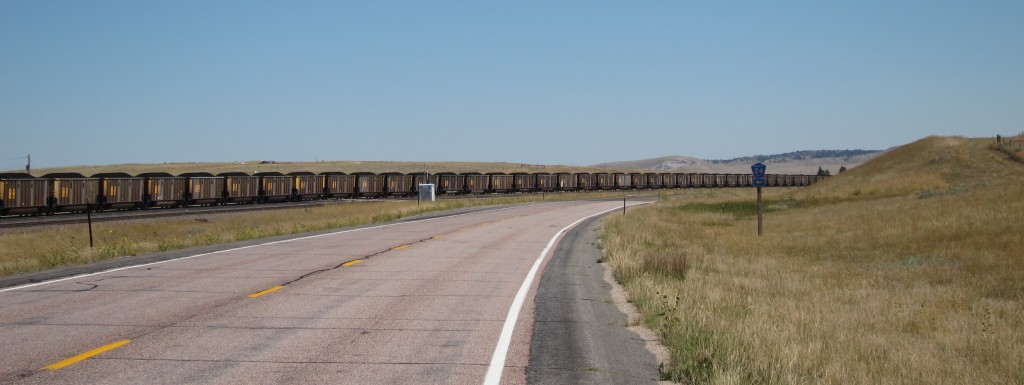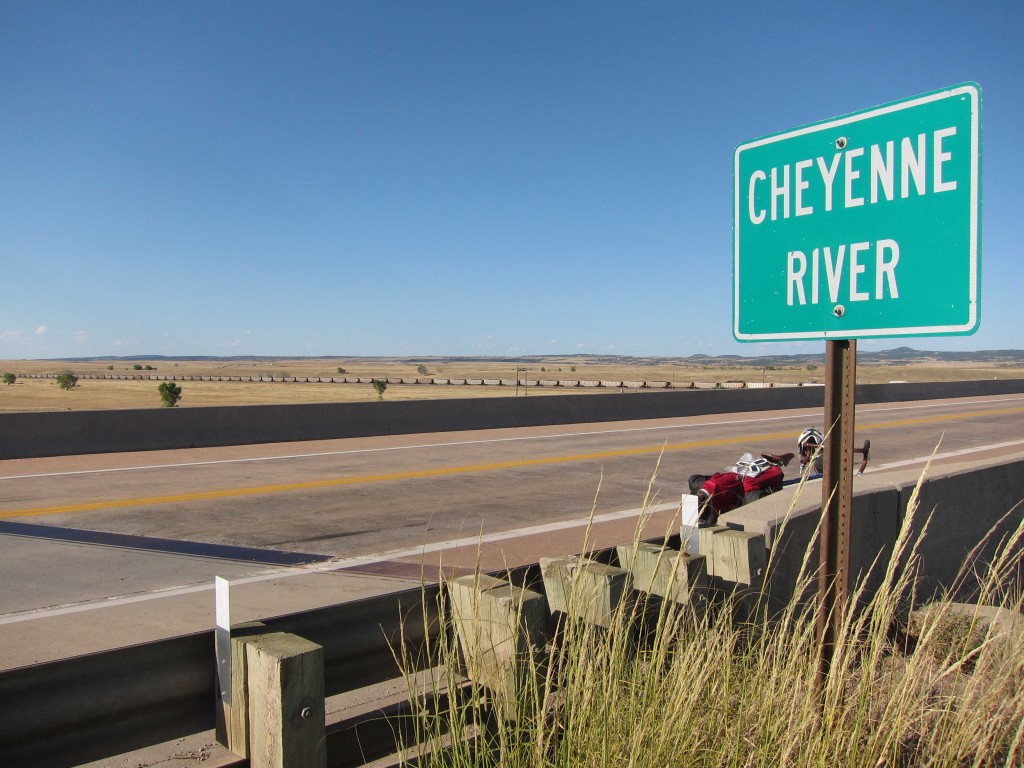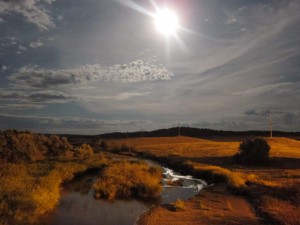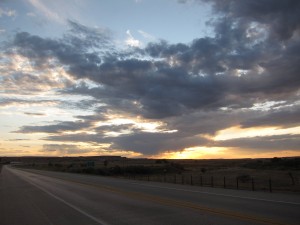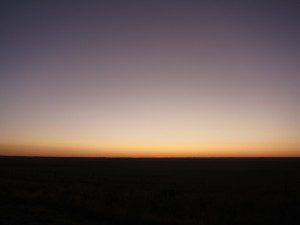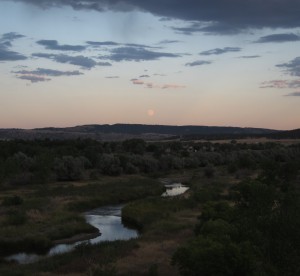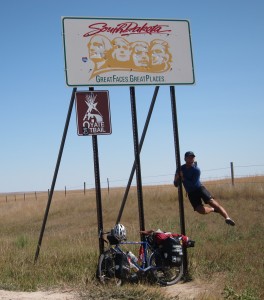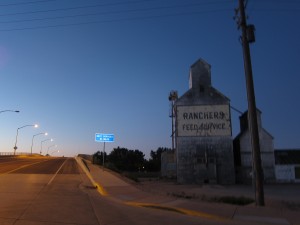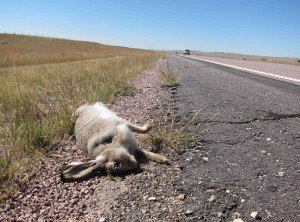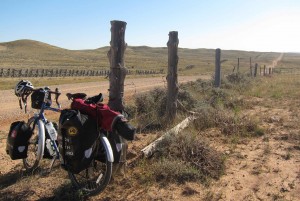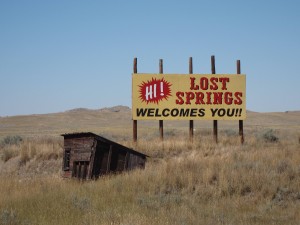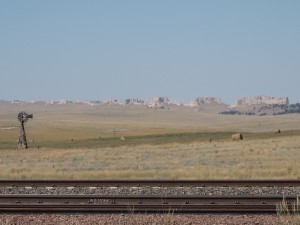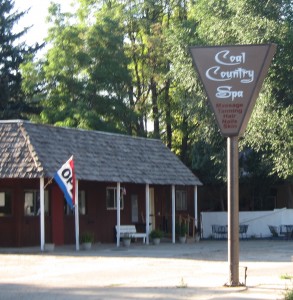13 Sep, 2011

Chuck and Lisa-- here with the tandem bike-- and their neighbor Mike. Those are the J for Jackelope Velo jerseys.
Meet Chuck and Lisa Mangus. They live just outside of Douglas, Wyoming—a small town in the southern part of the state’s coal region. They run a successful company that provides physical therapy to several small hospitals in the area. They have a beautiful home that is the product of their lives’ work aided by the labor of their hands and the hands of their two happy, almost-grown children. In short, Chuck and Lisa are living their dream. In the process, they are showing us how to live and dream in a way that is mindful of our neighbors and the planet.
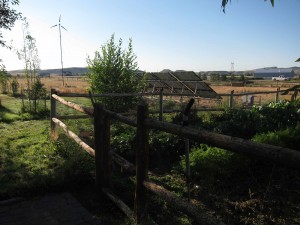
Chuck and Lisa's yard, complete with 1 kilowatt windmill, 2 kilowatts of sloar panels, and an organic garden.
Despite the fact that they live in a region in which local coal production provides relatively inexpensive energy, Chuck and Lisa are not reliant on this regional comfort. In fact, rather than pay for electricity, they actually sell the power company their excess. Because of the 1 kilowatt generated by their windmill and 2 kilowatt’s surging from their solar panels, the Mangus clan is providing energy for others and making money in the process.
Of course, their efforts are not simply focused on the financial benefits. Mindful practice abounds in this small town household. Another concrete example is their organic garden, which is bountiful in spite of the short Wyoming growing period. Despite the planet-mindful nature of these practices, Chuck and Lisa do not tout their behavior. They simply live mindfully as if that is what everyone does—as if there were nothing to it. Like the windmill and solar panels, it is clear that these mindful practices bring a surplus of energy to their lives.
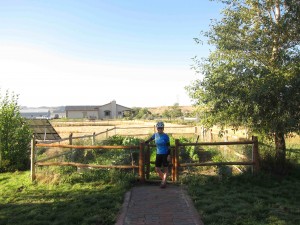 While the garden and power contributions are all well and good, Chuck and Lisa’s real passion is cycling. This passion first manifested itself in Chuck’s cross-Canada adventure with a friend at the age of 16! In more recent years, Chuck and Lisa still tour. These days, they opt for the tandem, which allows them to experience their travels to everywhere from Vermont to Northern Ireland together. They have helped spread their passion to the Douglas area through the J—for “jackelope”—Velo Cycling team. They organize rides, designed jerseys, run a little gear shop in their garage, and gather folks in their basement for winter training. They are no slouches. Weather permitting, they ride 60 miles a day in addition to Lisa’s running and swimming training for triathlons.
While the garden and power contributions are all well and good, Chuck and Lisa’s real passion is cycling. This passion first manifested itself in Chuck’s cross-Canada adventure with a friend at the age of 16! In more recent years, Chuck and Lisa still tour. These days, they opt for the tandem, which allows them to experience their travels to everywhere from Vermont to Northern Ireland together. They have helped spread their passion to the Douglas area through the J—for “jackelope”—Velo Cycling team. They organize rides, designed jerseys, run a little gear shop in their garage, and gather folks in their basement for winter training. They are no slouches. Weather permitting, they ride 60 miles a day in addition to Lisa’s running and swimming training for triathlons.
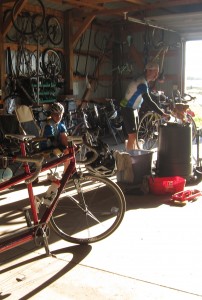 On top of all of this, the Mangus family is also kind to the sojourner. After engaging me in conversation at Douglas’ Mexican restaurant, they kindly opened their home to me. They know the value of a shower, a clean bed, and a hearty breakfast, and they frequently extend their kindness to passing cyclists and the like.
On top of all of this, the Mangus family is also kind to the sojourner. After engaging me in conversation at Douglas’ Mexican restaurant, they kindly opened their home to me. They know the value of a shower, a clean bed, and a hearty breakfast, and they frequently extend their kindness to passing cyclists and the like.
While chatting over our pre-ride waffles, they told me a bit about the local coal industry. We talked about the regional problem of not being able to get enough trains in to supply the coal at the rate that America’s energy needs demand it. Plenty of coal, but the deman is so great that even a steady flow of trains night and day cannot compete. On the ride I did after leaving Douglas, I crossed 2 separate train routes. Each route had trains coming in and out at a rate of 20 minutes between trains. Each train has at least 110 cars loaded with coal (headed out, of course; empty returning). I talked with a conductor in Edgemont, SD, where trains change engineers, etc. He told me that most trains have more like 120-125 cars. To give you some idea of what these trains look like, see the pictures below. There is also a video, which I had to cut short. Originally, it had the approach of an empty train, its passing, and then the portion you see here followed by the complete passing of the train and commentary. I apologize that I was unable to upload the entire video due to limited internet access and a few failed attempts.
These massive trains remind me of the demand that we are putting on the earth. While the extraction, shipping, and burning of coal has atrocious effects on the planet, the rate at which it occurs is a direct product of the demand that we place on energy. Yes—it would be great to set up an excess energy system like Chuck and Lisa or the Sierra Nevada Brewery we saw months ago, but it is more important that we curtail our demand for energy. Find ways to cut back on energy. Take a break—an energy Sabbath—and plug back into the source of your most significant energy needs.

Wild turkey along the Michelson Trail to Custer, SD. There must have been at least 15 of them. I got a good video that shows them as they all work in and out of the trees and bushes within 15 feet of me on the bike.
Before you dismiss Chuck and Lisa as over-achievers in easy circumstances, let me remind you that they do all of this in Smalltown, America. This is the great work that we are starting to see spring up all over the country—even where we least expect it, like in the heart of coal country. Chuck and Lisa show us that we can do it, too. Wherever you live, you can start putting your awareness of climate change into practice. It’s not that hard. In fact, it might enrich your life in more ways than one. If it doesn’t pad your pocketbook, it can deepen your connection to the divine and the world in which we witness that presence at work.
One thing is certain: we cannot afford NOT to be aware of the changes going on around us. For some, those changes will affect work and income. For others, it will affect homes and infrastructure. For everyone, the decision to ignore these changes is equivalent to turning our back on the love of God and our neighbors.
Until we meet again
More commonly practicing love
Than we thought possible.
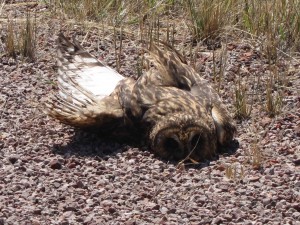
Sadly, I've learned a good deal about regional fauna through roadkill. This is a short eared owl, I believe. See: http://sdakotabirds.com/species/short_eared_owl_info.htm for more. If you think I post a lot of these pictures, you should try riding one of these roads. I'm keeping it slim.
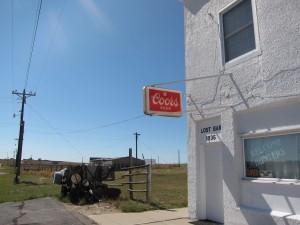
The Lost Bar of Lost Springs. Opens occasionally. Note the "Hunters Welcome" sign. I met a pair of expert bow hunters that came to the area to hunt antelope. Interesting folks.


